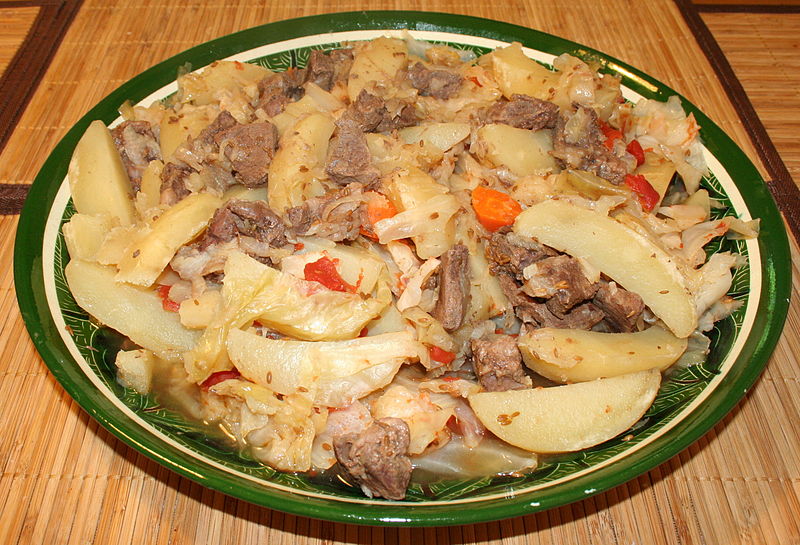Dimlama, a traditional dish originating from Central Asia, particularly the regions of Uzbekistan and Tajikistan, embodies the essence of rustic cooking and communal dining. Often referred to as a “one-pot meal,” dimlama is not only a feast for the palate but also a celebration of culture, family, and the art of slow cooking.
At its core, dimlama is a hearty stew that combines various vegetables and meats, typically beef, although chicken and even fish can be used depending on regional variations and personal preferences. The ingredients are layered in a pot, creating a vibrant tapestry of colors and flavors that gradually meld together during the cooking process.
Ingredients and Preparation
The beauty of dimlama lies in its versatility. While each family may have their own secret recipe, the common ingredients of these today food recipes include:
- Meat: Usually lamb or beef, cut into chunks.• Vegetables: Potatoes, carrots, onions, bell peppers, and tomatoes are staples. Eggplant and zucchini may also make an appearance, adding depth to the dish.
- Spices: Common seasonings include salt, black pepper, garlic, and fresh herbs like dill or parsley, enhancing the flavor profile.
- Liquid: Water or broth is added to the pot, allowing the ingredients to simmer together, creating a rich, flavorful sauce.
The preparation is straightforward yet requires patience. The ingredients are typically arranged in layers, with the meat at the bottom, followed by hearty vegetables, and finally topped with herbs and spices. Once assembled, the pot is covered tightly to trap steam and juices, allowing the flavors to develop over time.
Cooking Methods
Dimlama can be cooked in various ways, depending on the cook’s preference and available resources. Traditional methods include:
- Stovetop: In a heavy-bottomed pot or dutch oven, where the dish is simmered slowly.
- Oven: Some opt to bake dimlama, providing a different texture and flavor.
- Open fire: In rural areas, it is not uncommon for dimlama to be cooked over an open flame, adding a distinct smokiness to the dish.
The cooking process usually takes a few hours, allowing the ingredients to soften and the flavors to develop fully. It’s this slow cooking that makes dimlama so comforting and satisfying.
Dimlama is more than just a meal; it is a symbol of hospitality in Central Asian culture. It is commonly served during family gatherings, holidays, and special occasions, bringing people together around the table. The communal aspect of sharing a large pot of dimlama fosters connections and conversations, making it a cherished culinary tradition.
As global cuisine such as these today food recipes continues to evolve and intermix, dimlama has gained recognition beyond Central Asia. Food enthusiasts and home cooks worldwide are beginning to explore this dish, drawn in by its simplicity, heartiness, and the opportunity to customize it with local ingredients.
In a world that often celebrates fast-paced meals and convenience, dimlama serves as a reminder of the joys of slow cooking and the warmth of shared experiences. Its rich flavors, cultural roots, and adaptable nature make it a dish worth exploring for anyone interested in expanding their culinary horizons. Whether you’re enjoying it at a bustling family gathering or preparing it in your kitchen, dimlama is a dish that nourishes both the body and the soul.
